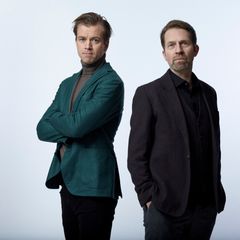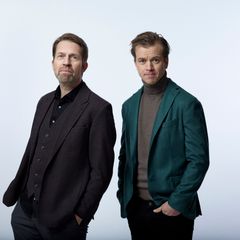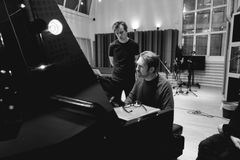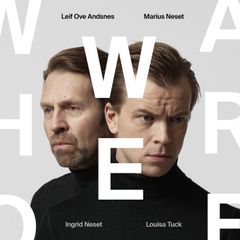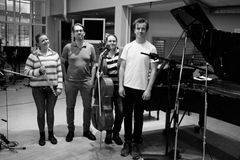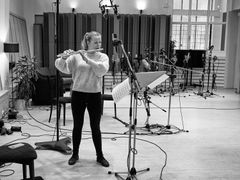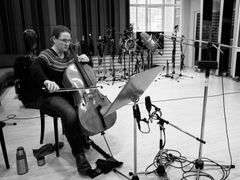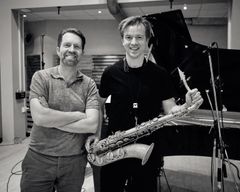World Premiere Recording of Marius Neset and Leif Ove Andsnes Collaboration Out Now!
Today we are proud to present the world premiere recording of the collaboration between saxophonist and composer Marius Neset and pianist Leif Ove Andsnes, two of the world's leading performers in the fields of classical music and jazz.
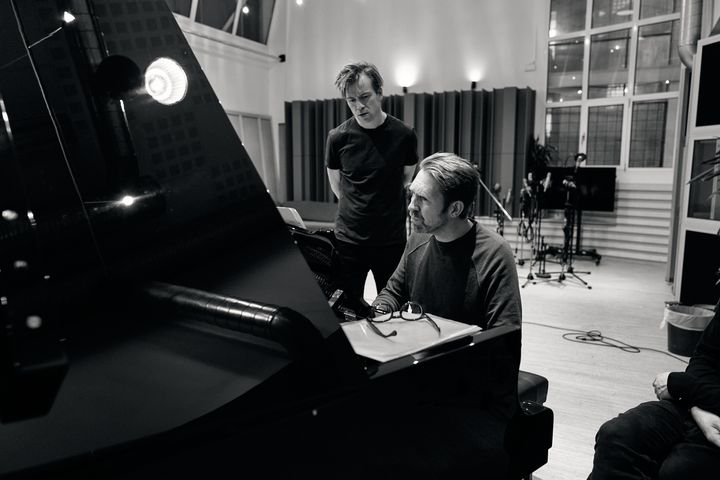
Who They Are
The album Who We Are is the first studio recording of the collaboration between pianist Leif Ove Andsnes and saxophonist/composer Marius Neset, two of the world’s leading performers in the fields of classical music and jazz, respectively.
These two musicians, with backgrounds from different genres, usually focus on different stylistic models in their expressive idioms. For example, like most of his classical colleagues and unlike jazz performers, Andsnes does not improvise. But despite this difference and others, Who We Are strongly suggests that the similarities in the two players’ musical perceptions and approaches are more prevalent and significant than the differences, and that they are pursuing many of the same objectives in their musical narratives.
In their encounter here, in Neset’s compositions, their playing is imbued with a tangibly inspired, hyper-communicative, fertile sense of community. Playfully, but with total, controlled ownership of both the stillness and the storm, they create music that sounds entirely organic and original, and which in the course of the album’s running time makes words and concepts such as “genres”, “genre blends”, and “fusion” seem oddly irrelevant.
They are in excellent company with flautist Ingrid Søfteland Neset and cellist Louisa Tuck. Ingrid Søfteland Neset, who lives in Copenhagen, is former principal flautist of the Stavanger Symphony Orchestra. She is the saxophonist’s sister and often plays together with him. Louisa Tuck, originally British but now based in Oslo, has been principal cellist of the Oslo Philharmonic since 2015, and also has an extensive solo career. These two musicians, with their finely honed classical training and flawless instrumental technique, are perfectly suited to the quartets and duos of Who We Are. An attentive listener can simply lean back in a comfortable armchair (or perhaps sit at the edge of it), be carried away, and even break out in delighted laughter when the musicians’ inspired interplay takes off into the stratosphere.
(Tip for listeners: Apart from a few improvised sax solos, all the music on Who We Are has been composed and is played as written. What you think is improvised is most likely written notation. What you would swear is improvised is probably also written. Unbelievable, but that is Who They Are.)
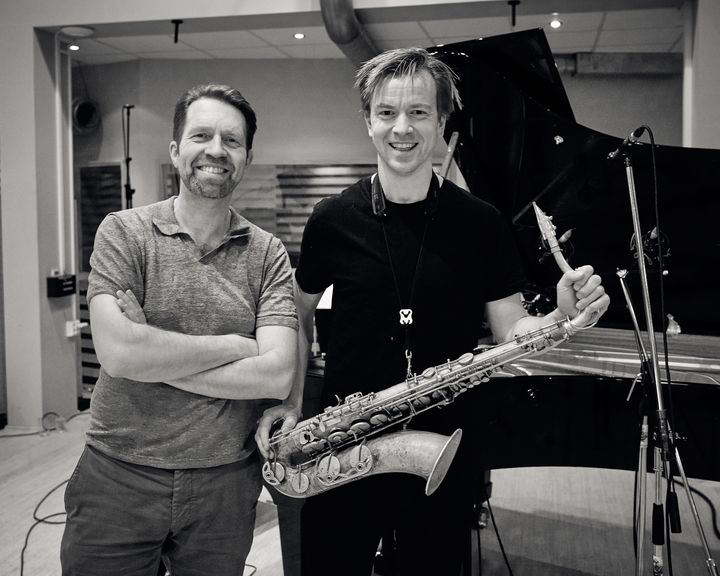
The story of Who We Are
1985: Marius Neset is born in Os, outside Bergen, around the same time as the 15-year-old schoolboy and promising pianist Leif Ove Andsnes, from Karmøy, begins commuting on weekends to study with piano teacher Jiří Hlinka in Bergen.
In the course of the next few decades, Andsnes establishes himself as one of the great classical pianists of the world with his interpretations of the foremost works of the genre. He makes record after record, and receives awards from critics and audiences alike. Leif Ove Andsnes tours extensively and becomes a highly sought-after and often recurring guest in leading concert halls and symphony orchestras throughout the world. He maintains a place in his heart, as well as in his schedule, for chamber music, as a performer, as co-artistic director of the Risør Festival of Chamber Music from 1992 until 2010, and as the founding director of the Rosendal Chamber Music Festival since 2016.
During the same period Marius Neset, after a childhood infatuation with the drums, chooses the saxophone as his instrument, jazz as his music, and the Rhythmic Music Conservatory in Copenhagen as his arena for study starting in 2003. He soon attracts attention locally, and around 2010 the international jazz community begins to buzz about this young, somewhat awe-inspiring Norwegian saxophonist, bandleader, and composer. In 2017, after Neset has released his seventh album as leader or co-leader, the event occurs that in retrospect could seem as though it was meant to be: artistic contact is established between the Bergen-based pianist and the then Copenhagen-based saxophonist.
TV
“We were appearing separately on a major TV show being broadcast from Grieghallen in Bergen, but NRK [the Norwegian Broadcasting Corporation] asked if we could consider doing something together, too,” Marius Neset explains. “I gave them ‘Prague’s Ballet’, which I had recorded with my quintet, and asked them to play it for Leif Ove. Would he consider playing it if I wrote an arrangement for him? He liked the idea, and I sent him the arrangement. But then the TV show was cancelled because the main guest on the programme, Professor Frank Aarebrot, passed away. The following year we did get the chance to play ‘Prague’s Ballet’ all the same, when Leif Ove agreed to participate in my quintet concert in Håkon’s Hall during the Bergen International Festival. NRK, still keen to have us play together, even made a short film about the concert preparations, which was broadcast as part of the programme ‘Hovedscenen’ on NRK2.”
“Marius came up with a trio arrangement for the two of us and cellist Andreas Brantelid, a slightly more classical version of ‘Prague’s Ballet’, which I thought was really good,” says Leif Ove Andsnes. “I stayed in Håkon’s Hall and listened to the rest of his concert, too, and was extremely impressed by both his originality and the level of his work with his quintet. I thought that he was operating at a fascinating frontier in writing for those of us who don’t improvise, and decided to commission a work from him for the Rosendal Chamber Music Festival. He accepted the commission, and we aimed at having something ready for the Festival in 2020.”
Did you give him free rein?
“2020 was the year when Beethoven’s 250th birthday was celebrated, so I said, ‘There are no restrictions, but if you want, you can use something by Beethoven as your point of departure, for instance the second movement of the Seventh Symphony’.”
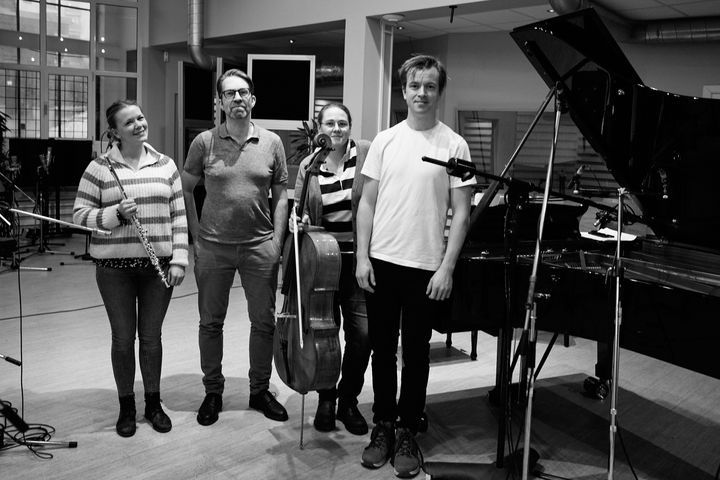
Closed down and cancelled
“I was very pleased that Leif Ove wanted to collaborate more after ‘Prague’s Ballet’,” says Marius. “I had assumed that we would only work together that once, and thought, ‘What an experience it was to play with him; what a fantastic pianist.’ But then he contacted me again later that year. We met up in Bergen, talked about what we might consider doing at Rosendal, and decided on a combination including flute and cello. Actually, it was probably Leif Ove’s suggestion to invite Ingrid and Louisa to participate in what seemed to me to be a really exciting chamber quartet.”
How did you feel about the idea of using Beethoven?
“Positive. The chords in the second movement of the Seventh Symphony became, in a way, the basis for the harmonic concept of Who We Are. I played around these chords quite a bit for a while, but eventually I changed direction completely, and did it in my own way. All the same, I feel that there are some allusions to Beethoven here and there in Who We Are.”
How do you explain the title?
“Considering that the point of departure was in some respects Beethoven, I began to reflect on how we become the musicians we are. For my part, it is probably the result of everything I have listened to, studied, and played through the years. I wrote the work in four parts. The first is called ‘Beginning’, while the second is ‘Legacy’, which can be construed as referring to everything that helps make us the people we are. ‘Legacy’ was the part that I wrote first, just before Norway went into lockdown for Covid in 2020, and the title Who We Are derives from that.”
What effect did the lockdown have on your composing activities?
“It became clear fairly quickly that the 2020 festival would be cancelled, and then a few weeks went by when I didn’t have the energy to do anything at all. Everything seemed so uncertain, but after a while I decided to try to write something despite the situation. That became part three, ‘Uncertainty’, and it expresses the doubt and insecurity that I, and probably everyone else, felt during that period. I find it interesting that what happens around me, both musically and in society in general, has an impact on what I do, either consciously or unconsciously. Although I have a lot of musical ideas and tools that I can use for harmonies, rhythms, and so on, for me music is very much connected to feelings.”
In what way?
“I let my feelings take control when I’m composing. I constantly have to make choices, try out different alternatives, and make decisions based on the feelings that are evoked by what I hear.”
What is the final part called?
“It’s called ‘Evolution’. I wrote it in a somewhat elated mood in the late spring, after I had talked to Leif Ove and found out that it would be performed after all. Admittedly, not as a festival concert, but as a closed concert filmed for TV by NRK and broadcast as part of the show ‘Hovedscenen’. And in 2022 we finally got to perform Who We Are at the Rosendal festival.”
“I think that Who We Are turned out to be incredibly good, and I really love it,” says Leif Ove Andsnes. “After the Rosendal concert in 2022 we began to talk about how much fun it would be to record it, maybe along with ‘Prague’s Ballet’ and a variety of duets, and Marius said, ‘I could write a piece for piano and sax, and one for cello and sax.’ He already had a flute-sax duet on ‘Road to Polaris. Part 1’, so then we had both a recording project and a small concert programme that I hope we can perform a few times.”
Genre?
Who We Are was recorded in Oslo’s renowned Rainbow Studio in the course of three days in December 2023, where the music acquired its – up to then – final form. How much of the rehearsal process, recording process, and finally the music itself can be said to bear traces of “jazz”, “classical”, or “other” is up to each listener to decide. But don’t expect any assistance from Neset or Andsnes in analysing it.
“We talked about that after having made the recording,” says Marius Neset. “We asked each other: What kind of genre is this, anyway? The answer is that I have no idea, and I don’t think anyone else does, either. In any case, it’s neither ‘classical music’ nor ‘jazz’.”
“I feel that Marius has done his composing without focusing especially on what is or is not permitted within the various traditions,” explains Leif Ove Andsnes. “He has written the music he wanted to write, which is music that grabs hold of me and sparks my interest. I like the fact that we don’t operate within any particular genre or style, which gives us a kind of open space where neither of us feels that we’re being required to do something that we actually can’t do. I hope we can continue our collaboration, in one form or another.”
- Text by Terje Mosnes, Translated by Shari Gerber
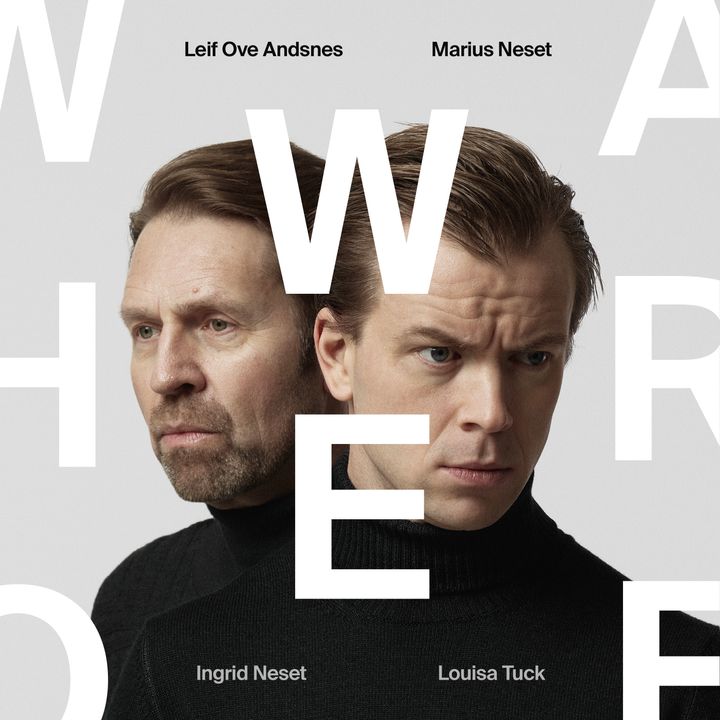
The album was recorded at Rainbow Studios in December 2023 with Jørn Pedersen as producer and Martin Abrahamsen as engineer. The album is released by Simax on LP, CD, and Dolby Atmos.
All compositions by Marius Neset
Marius Neset: Tenor and soprano saxophone
Leif Ove Andsnes: Piano
Louisa Tuck: Cello
Ingrid Neset: Flute
Keywords
Contacts
Jade Marie Hasselgård
Tel:95221196jade@grappa.noImages
Links
About Grappa
Grappa Musikkforlag was established in 1983, and is the oldest and largest independent record company in Norway. Home of many prestigious labels including Hubro, Simax Classics, Odin, Blue Mood, Heilo, Barneselskapet and Grappa label. Close collaborations with other strong indies, including Rune Grammofon and Drabant. A wide variety of genres includes jazz, folk, classical, contemporary, pop, rock, blues, singer/songwriter – all from Norwegian artists of the highest quality.
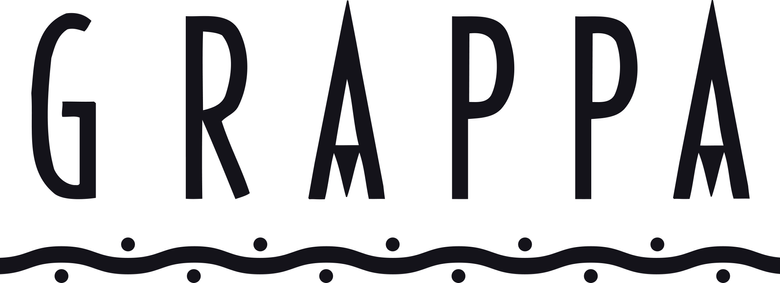
Alternative languages
Subscribe to releases from Sounds Like Gold
Subscribe to all the latest releases from Sounds Like Gold by registering your e-mail address below. You can unsubscribe at any time.
Latest releases from Sounds Like Gold
Musikkutsendelse: Tora Augestad slipper julesingel fra kommende album "Vårvill"28.11.2025 09:50:36 CET | Pressemelding
Den kritikerroste vokalisten Tora Augestad er aktuell med første smakebit fra hennes første album bestående av egenkomponert materiale.
Gangar slipper en rå og vakker Bånsull med Synnøve Brøndbo Plassen og Martin Steinum Brun28.11.2025 08:45:00 CET | Pressemelding
På andre singel fra det kommende albumet Dreng byr folkemusikkbandet Gangar på en melankolsk og rå bånsul utenom det vanlige i samarbeid med Synnøve Brøndbo Plassen og Martin Steinum Brun – to av de mest uttrykksfulle stemmene på den norske folkemusikkscenen i dag.
Gangar releases the single Bånsull - a wild, raw, and beautiful lullaby - together with Synnøve Brøndbo Plassen and Martin Steinum Brun28.11.2025 08:45:00 CET | Press release
On the second single from their upcoming album Dreng, the folk band Gangar presents a melancholic and raw bånsull, a lullaby unlike any other, in collaboration with Synnøve Brøndbo Plassen and Martin Steinum Brun, two of the most expressive voices on today’s Norwegian folk music scene.
Anna Lille gjør den norske klassikeren "Min første kjærlighet" til sin egen21.11.2025 10:23:19 CET | Pressemelding
For aller første gang på norsk er Anna Lille aktuell med en helt ny og gripende coverlåt, laget spesielt for Nordisk Films kommende spillefilm “Min første kjærlighet”. Her tolker hun Jahn Teigens udødelige klassiker i en moderne og emosjonell versjon som både er tro mot originalen – og umiskjennelig Anna Lille. Låta "Min første kjærlighet" er ute nå, mens spillefilmen har premiere 27. februar 2026. Lytt til låta her
Pedal-steel pionerene Joe Harvey-Whyte og Geir Sundstøl med første singel fra nytt album!21.11.2025 08:45:00 CET | Pressemelding
Et hypnotisk lyd-dikt som henter navnet sitt fra en av Londons glemte elver. The Tyburn dykker dypt ned i det kollektive underbevisste og dukker opp igjen med en håndfull glemte folkemelodier. The Tyburn, ute i dag, er den første singelen fra det kommende albumet Langeleik.
In our pressroom you can read all our latest releases, find our press contacts, images, documents and other relevant information about us.
Visit our pressroom
